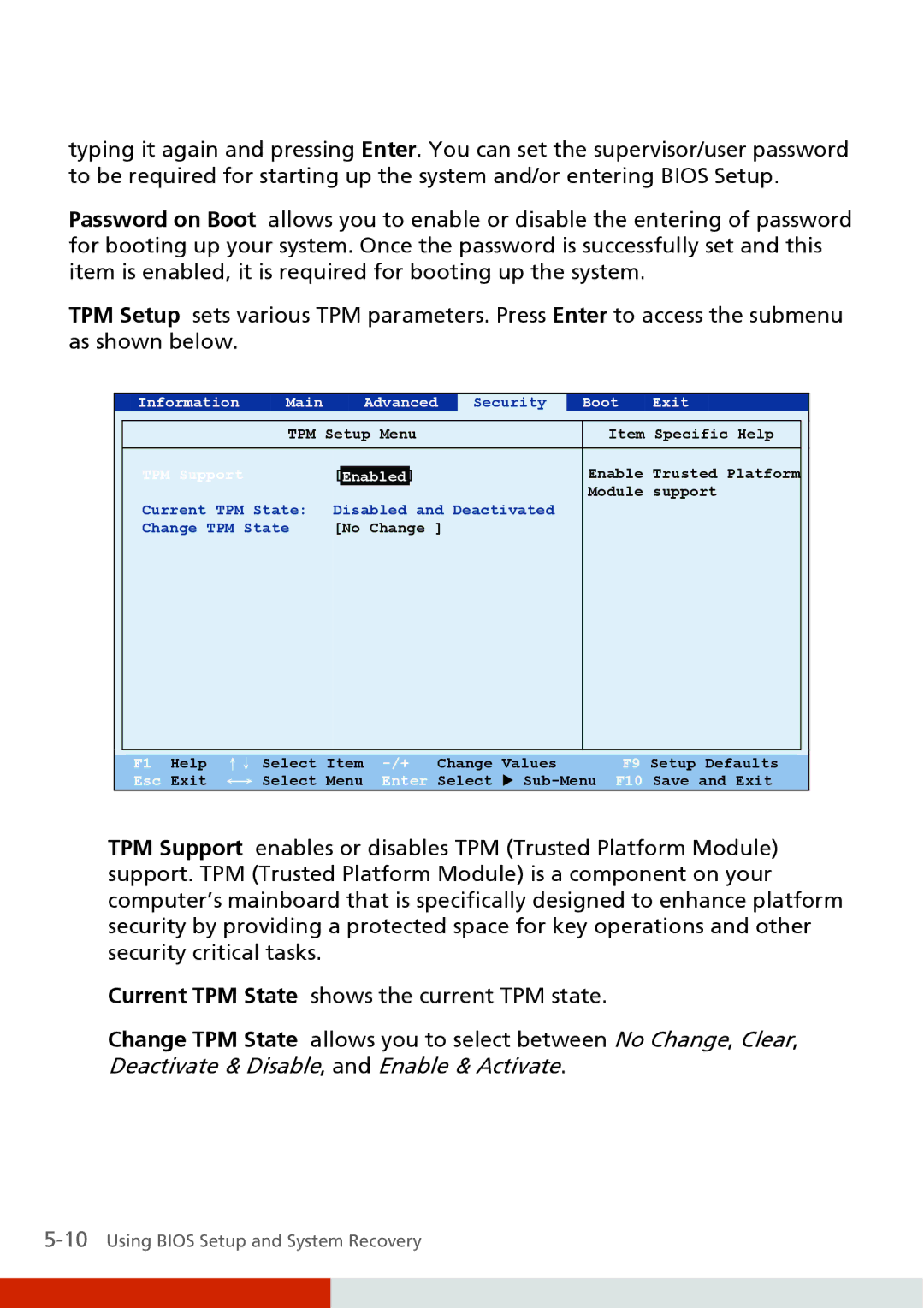
typing it again and pressing Enter. You can set the supervisor/user password to be required for starting up the system and/or entering BIOS Setup.
Password on Boot allows you to enable or disable the entering of password for booting up your system. Once the password is successfully set and this item is enabled, it is required for booting up the system.
TPM Setup sets various TPM parameters. Press Enter to access the submenu as shown below.
|
| Information | Main |
|
| Advanced | Security |
| Boot | Exit | |||
|
|
|
|
|
|
|
|
|
|
|
|
|
|
|
|
|
| TPM Setup Menu |
|
|
| Item Specific Help | |||||
|
| TPM Support |
|
|
|
|
|
|
| Enable Trusted Platform | |||
|
|
|
| Enabled | ] |
|
|
| |||||
|
|
|
|
|
|
|
|
|
|
|
| Module support | |
|
| Current TPM State: | Disabled and Deactivated |
|
| ||||||||
|
|
|
|
|
| ||||||||
|
| Change TPM State | [No Change ] |
|
|
|
|
| |||||
|
|
|
|
|
|
|
|
|
| ||||
| F1 Help | ↑↓ Select Item |
|
|
| F9 Setup Defaults | |||||||
| Esc Exit | ←→ Select Menu | Enter Select X | ||||||||||
TPM Support enables or disables TPM (Trusted Platform Module) support. TPM (Trusted Platform Module) is a component on your computer’s mainboard that is specifically designed to enhance platform security by providing a protected space for key operations and other security critical tasks.
Current TPM State shows the current TPM state.
Change TPM State allows you to select between No Change, Clear, Deactivate & Disable, and Enable & Activate.
